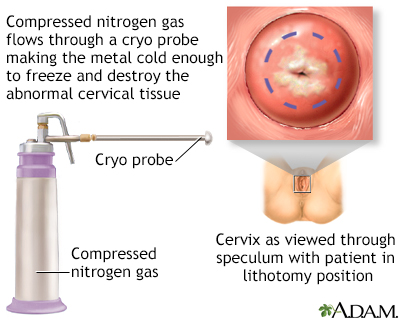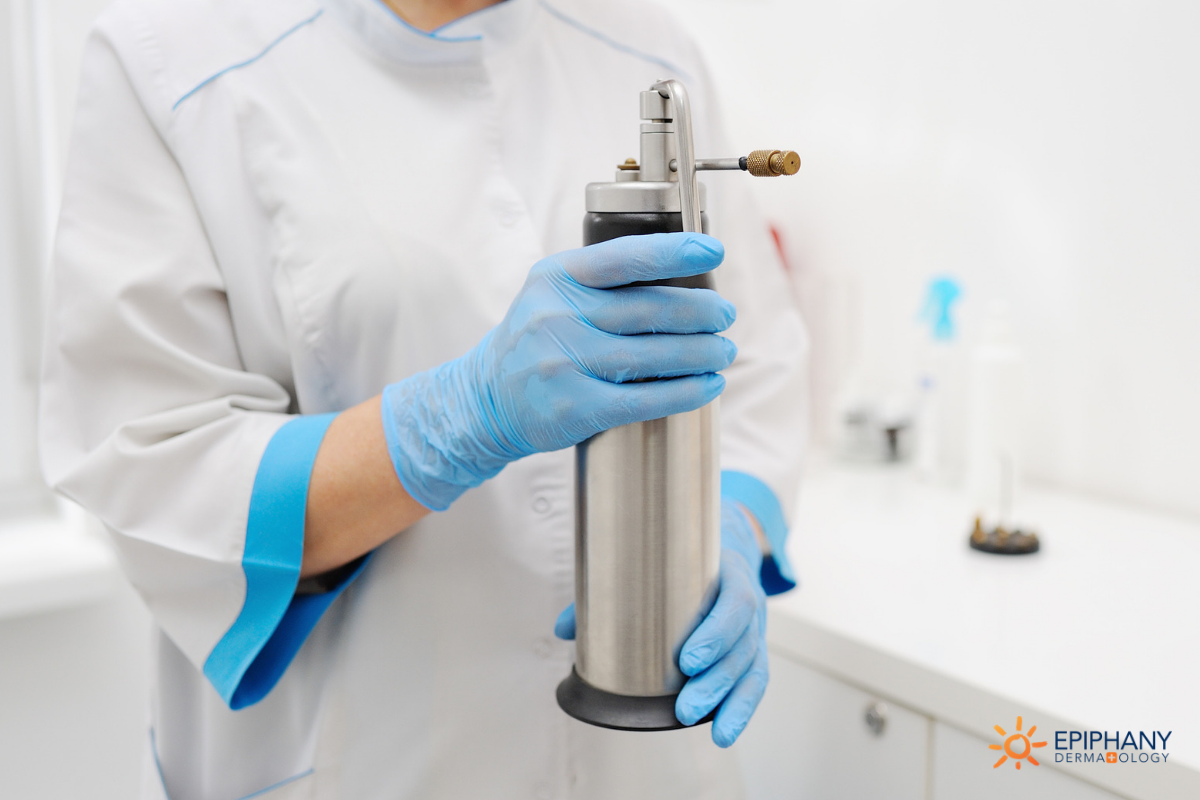Cryosurgery, also known as cryotherapy or cold surgery, is a minimally invasive procedure that involves the use of extreme cold temperatures to destroy abnormal tissue. This technique has become increasingly popular in recent years due to its effectiveness and versatility in various medical disciplines. From treating skin lesions to prostate cancer, cryosurgery has established itself as a valuable therapeutic modality. In this article, we will take a journey through the history, principles, applications, benefits, and limitations of cryosurgery, providing an interactive guide for understanding this fascinating treatment.
How Cryosurgery Works
The principle behind cryosurgery is based on the destructive effects of extremely low temperatures on living tissue. The process involves using a cryogen, typically liquid nitrogen or carbon dioxide, to create a frozen “ice ball” at the target tissue site. The freezing temperature causes cellular damage and destruction, which ultimately leads to the death of the abnormal tissue.
During the procedure, the doctor uses a special instrument called a cryoprobe to administer the cryogen onto the affected area. The probe’s tip reaches temperatures as low as -196°C (-321°F), allowing for precise targeting of the diseased tissue. The procedure can be performed under local or general anesthesia, depending on the location and extent of the treatment.
The Role of Freezing and Thawing in Cryosurgery
One of the unique aspects of cryosurgery is the use of controlled freezing and thawing cycles during the procedure. The freezing process usually takes 5-10 minutes, followed by a thawing period of about 5 minutes. This cycle is repeated several times during the procedure, ensuring adequate destruction of the targeted tissues while minimizing damage to surrounding healthy tissue.
The freezing temperature and duration of each cycle are carefully monitored by the physician using specialized equipment. This technology allows for precise control of the treatment, minimizing the risk of complications and improving outcomes. The freezing and thawing cycles also help to limit damage to critical structures such as nerves and blood vessels, making cryosurgery a relatively safe procedure.
Cryosurgery vs. Other Thermal Ablation Techniques
Cryosurgery is often compared to other thermal ablation techniques, such as radiofrequency ablation (RFA) and microwave ablation (MWA). While all of these methods involve using extreme temperatures to destroy abnormal tissue, there are some key differences between them.
One significant advantage of cryosurgery over RFA and MWA is its ability to preserve the collagen matrix in the treated area. This matrix plays an essential role in wound healing and prevents scarring, making cryosurgery a preferred option for cosmetic procedures. Additionally, cryosurgery has a lower risk of thermal injury to surrounding structures compared to RFA and MWA, which may cause collateral damage due to the heat generated during the procedure.
Common Applications of Cryosurgery

Since its inception, cryosurgery has been primarily used in dermatology for treating skin lesions, including warts, moles, and certain types of skin cancer. However, with advancements in technology, this technique has expanded its applications to encompass a wide range of medical specialties.
Dermatology
Dermatologists commonly use cryosurgery to remove benign skin growths, such as seborrheic keratoses and actinic keratoses. It is also effective in treating small skin cancers, including basal cell and squamous cell carcinomas. Cryosurgery works by destroying the cancerous cells while preserving the surrounding healthy tissue, making it a popular choice for facial skin cancer treatment.
Ophthalmology
Cryosurgery is widely used in ophthalmology for treating various eye conditions, including retinal detachment, cataracts, and glaucoma. The precise targeting and minimal collateral damage that comes with cryosurgery make it a safe and effective option for these delicate structures.
Gynecology
In gynecology, cryosurgery is commonly used to treat cervical dysplasia, a precancerous condition of the cervix. By freezing and destroying the abnormal cells, cryosurgery can prevent the progression of dysplasia into cervical cancer. It is also useful in treating genital warts caused by the human papillomavirus (HPV).
Urology
Cryosurgery has emerged as a promising treatment option for prostate cancer. This technique involves inserting cryoprobes into the prostate gland and freezing the cancerous tissue, effectively destroying the tumor while sparing the surrounding healthy tissue. Cryosurgery may be considered for patients who are not suitable candidates for surgery or radiation therapy or for those with recurrent prostate cancer after previous treatments.
Other Applications
The use of cryosurgery has expanded beyond traditional medical disciplines to encompass various other specialties, including orthopedics, pain management, and gastroenterology. In orthopedics, cryosurgery is used to treat bone tumors and cartilage injuries. Pain management specialists may use this technique to provide relief for chronic nerve pain conditions such as trigeminal neuralgia. In gastroenterology, cryosurgery is used to treat esophageal cancer and other gastrointestinal disorders.
Benefits and Risks of Cryosurgery

Like any medical procedure, cryosurgery comes with its own set of advantages and disadvantages. Understanding these benefits and risks is crucial for making an informed decision about whether this treatment is right for you.
Advantages of Cryosurgery
One of the main advantages of cryosurgery is its minimally invasive nature. Unlike traditional surgical procedures, which involve cutting and removal of tissue, cryosurgery uses targeted freezing to destroy abnormal tissue without causing significant trauma to the body. This results in less pain, faster recovery time, and reduced scarring.
Another significant advantage of cryosurgery is its ability to be used in various medical specialties, as discussed earlier. This versatility makes it a valuable treatment option for patients who may not be eligible for other forms of therapy.
Cryosurgery also offers a relatively low risk of complications compared to other thermal ablation techniques, making it a safer option for many patients. The precision and control provided by the freezing and thawing cycles reduce the risk of collateral damage to surrounding structures.
Risks of Cryosurgery
While cryosurgery is generally considered safe, as with any medical procedure, there are some potential risks to be aware of. These include:
- Pain or discomfort during and after the procedure
- Redness and swelling at the treatment site
- Formation of blisters or scabs in the treated area
- Numbness or tingling in the affected area
- Infection or bleeding at the treatment site
- Temporary changes in skin pigmentation
- Damage to nearby structures, such as nerves or blood vessels
These risks may vary depending on the location and extent of the treatment and your overall health. It is essential to discuss these potential risks with your doctor before undergoing cryosurgery.
Preparing for a Cryosurgery Procedure
Before undergoing cryosurgery, your doctor will provide you with specific instructions on how to prepare for the procedure. These may include:
- Informing your doctor about any medications you are currently taking, including over-the-counter supplements.
- Stopping any blood-thinning medications or supplements as advised by your doctor.
- Fasting for a certain period before the procedure if it involves general anesthesia.
- Arranging for someone to drive you home after the procedure if you will be receiving sedation or general anesthesia.
- Bringing comfortable clothing to wear after the procedure, as the treated area may be sore and sensitive.
It is crucial to follow your doctor’s instructions carefully to ensure a smooth and successful procedure.
Recovery and Aftercare Tips
Following your cryosurgery procedure, your doctor will provide you with instructions on how to care for the treated area. These may include:
- Applying ice packs to reduce swelling and discomfort.
- Keeping the treated area clean and dry.
- Avoiding activities that may cause friction or irritation to the treatment site.
- Taking over-the-counter pain medications as needed.
- Not picking at any blisters or scabs that may form in the treated area.
Most patients are able to resume their normal activities within a few days after cryosurgery. However, it is essential to follow your doctor’s guidance and attend any follow-up appointments to monitor your recovery.
Interactive Tools for Learning More About Cryosurgery
To enhance your understanding of cryosurgery, we have included some interactive tools and resources for you to explore:
- Virtual reality simulations that allow you to experience a cryosurgery procedure first-hand.
- Videos demonstrating how cryosurgery is performed in different medical specialties.
- Online forums and support groups where you can connect with others who have undergone cryosurgery.
- Educational websites and blogs with articles and videos explaining the science behind cryosurgery and its various applications.
Take advantage of these resources to learn more about this innovative treatment modality.
Conclusion
Cryosurgery has come a long way since its humble beginnings in the early 20th century. From treating skin lesions to prostate cancer, this technique has proven to be a versatile and effective therapeutic modality across various medical disciplines. While it does come with its own set of risks, the benefits of cryosurgery make it a valuable option for many patients. As technology continues to advance, we can expect to see even more exciting developments in the field of cryosurgery, further enhancing its potential as a safe and minimally invasive treatment option. We hope this interactive guide has provided you with a better understanding of cryosurgery and its applications, empowering you to make informed decisions about your healthcare.

